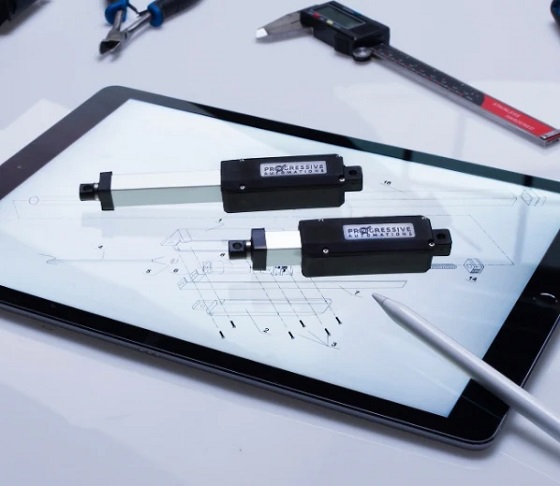Also Interesting
How Much Does It Cost to Outsource a Java App Development Team?

Not every business can create a mobile application in-house, since it may lack the necessary technical staff or time. That is why large corporations, start-ups, and expanding companies seeking to reduce costs and boost output have all adopted outsourcing.
In the field, project expenses are determined by the location of your outsourced app development team, your project specifications, and the technology stack you choose. For instance, depending on the amount of experience needed and the size of the app, adding Java development services to your mobile project may have a minor impact on the cost.
Why Do Businesses Choose to Outsource App Development?
Outsourcing projects is more cost-effective for businesses than keeping a full-time internal staff, particularly when Java app development skills are needed. Businesses also gain access to a larger talent pool, flexible working models, and round-the-clock productivity if your team is in a different time zone.
The pace at which outsourcing services are provided is also vital. It provides companies with a market advantage through its efficient reduction of product launch timing. The ability to scale your team through outsourcing matches the project phase requirements, which regular full-time staffing cannot effectively achieve.
Key Factors That Influence Outsourcing Costs
- App complexity: The expense for creating basic to-do list applications is much lower than the development costs of complex e-commerce or AI-powered programs.
- Platform: Your development expenses will differ according to the choice between iOS, Android, or both systems.
- Location of the development team: A developer located in Eastern Europe usually charges between $40 to $70 per hour, but developers working in the United States require fees within a $100 to $150 hourly range.
- Technology stack: Using Java for mobile app development can be cost-effective, especially when leveraging mature tools and libraries.
- Project timeline: Urgent timelines often mean more developers and higher costs.
Average Hourly Rates for Java Developers by Region
| Region | Hourly Rate (USD) |
| North America | $100–$150 |
| Western Europe | $70–$100 |
| Eastern Europe | $40–$70 |
| South Asia | $20–$50 |
| Southeast Asia | $25–$45 |
| Latin America | $35–$65 |
How to Outsource App Development the Smart Way
- Define the scope and platform: Decide if your app will run on iOS, Android, or both. Also, define whether you want a native app using mobile app development Java or something cross-platform.
- Choose a reliable outsourcing partner: Look for reviews, case studies and relevant experience. Communication is crucial, so make sure the team is responsive and understands your vision.
- Set milestones and payment terms: Avoid one-time payments. Work in stages and track progress regularly.
- Review code quality and documentation: Ask for sample code or conduct code audits. Good documentation is key for future updates.
Popular Outsourcing Models
-
Fixed Price Model
Best for small projects with clearly defined requirements. The total cost is agreed upon in advance, and there are minimal surprises.
-
Time and Material Model
Perfect for evolving projects where requirements may change. You pay based on the actual hours worked.
-
Dedicated Team Model
A full-time remote team that works as your extended staff. This is great for long-term projects and companies looking for full control without hiring internally.
Why Java is Still a Top Choice for Mobile Apps
The benefits of Java for app development include platform independence, strong community support, scalability, and a mature ecosystem of tools. Another major plus is that it has been around for decades, and most Android development frameworks are built with the language in mind. This makes Java app development a stable and predictable choice for businesses.
Pros and Cons of Java
Pros
- Excellent performance for large apps
- Huge community and documentation
- Easy integration with backend systems
- Works well with legacy systems.
Cons
- Verbose syntax compared to modern languages
- Slower to build UI-heavy apps compared to some newer frameworks.
How to Hire an App Developer Without Mistakes
- Check their portfolio for similar projects
- Conduct technical interviews or ask for trial tasks
- Discuss communication methods and working hours
- Make sure they have experience with Java for mobile app development if that’s what your project requires.
Realistic Cost Estimates for Outsourced Projects
| Type of App | Estimated Cost Range |
| Utility | $10,000–$25,000 |
| Social media | $30,000–$70,000 |
| E-commerce | $50,000–$120,000 |
| On-demand service | $60,000–$150,000 |
| Enterprise solution | $100,000–$250,000+ |
Final Thoughts
When a business decides to outsource mobile app development, it transforms its entire processes. It starts providing excellent professionals combined with cost and time efficiency. Proper communication, along with strategic planning and experienced cooperation, will lead to success.
No matter if you’re using mobile app development in Java or exploring cross-platform tools, outsourcing gives you flexibility without sacrificing quality. Knowing how to hire an app developer whose visions and principles match yours is the main requirement. If you choose to outsource, it can lead to cost reductions and time efficiency, along with decreased issues throughout the application creation process.
Also Interesting
How to Deposit and Withdraw in CAD at Sol Casino: A Guide for Canadian Players

When choosing an online casino, Canadian players not only look for exciting games and bonuses but also for easy and secure payment methods in Canadian dollars (CAD). Sol Casino understands this need and has created a streamlined system for deposits and withdrawals that suits players across Canada.
This guide walks you through how to fund your account, cash out your winnings, and which methods are most efficient and convenient.
Why Use CAD at Sol Casino?
Sol Casino supports transactions directly in Canadian dollars, which is a huge advantage. This means:
No currency conversion fees
Simplified banking
Faster transactions
Better tracking of your gambling budget
For Canadian players, avoiding unnecessary fees and delays is crucial. Sol Casino ensures you can deposit and withdraw in your local currency without any added complications.
How to Deposit Funds at Sol Casino (Step by Step)
Funding your Sol Casino account is simple. Follow these steps to make a deposit:
1. Log in to your Sol Casino account.
2. Go to the Cashier/Deposit section.
3. Choose your preferred payment method.
4. Enter the amount you wish to deposit (minimum deposit usually starts at $20 CAD).
5. Follow the prompts to complete the transaction.
Most deposits are instant, meaning you can start playing right away.
Popular Deposit Methods for Canadians
Sol Casino offers a variety of trusted options tailored for Canadian players:
Interac e-Transfer: A go-to choice in Canada, easy to use and highly secure.
MuchBetter: A modern e-wallet app offering fast, private transfers.
ecoPayz: Another reliable e-wallet widely used in Canada.
Visa/Mastercard: Traditional and familiar for most users.
Cryptocurrencies: Includes Bitcoin, Ethereum, and more for added privacy.
Each method is secure and designed to fit your lifestyle and preferences.
How to Withdraw Winnings in CAD
Cashing out your winnings is just as easy. Here’s how to request a withdrawal:
1. Go to your account dashboard and select Withdraw.
2. Choose the same method used for depositing (if possible).
3. Enter the amount you want to withdraw.
4. Submit your request and wait for confirmation.
Before processing your first withdrawal, Sol Casino may ask for ID verification to comply with KYC (Know Your Customer) rules. This is standard for any legitimate casino and helps protect your account from fraud.
Withdrawal Processing Time
Sol Casino processes withdrawal requests quickly. Here’s a general idea of how long it may take:
E-wallets (MuchBetter, ecoPayz): 0–24 hours
Cryptocurrency: 1–12 hours (depending on network speed)
Interac: 1–2 business days
Cards (Visa/Mastercard): Up to 3–5 business days
Once your identity is verified, future withdrawals are often processed faster.
Tips for Smooth Transactions
Verify your account early to avoid delays during your first withdrawal.
Use the same method for deposit and withdrawal whenever possible.
Set responsible limits to manage your gambling activity.
Watch for promotions offering cashback or deposit bonuses for specific payment methods.
Sol Casino also sends notifications and email confirmations for each transaction, adding transparency to the process.
Customer Support for Payment Issues
If you run into any trouble while depositing or withdrawing, Sol Casino has a 24/7 support team ready to help. You can use:
Live chat for immediate assistance
Email support for more detailed inquiries
FAQ section with answers to common questions about payments
All services are available in English and French, making support accessible to all Canadian users.
Conclusion: Fast, Flexible, and Canadian-Friendly Banking
Sol Casino has built a payment system that respects Canadian needs. With support for CAD, a variety of local methods like Interac and MuchBetter, and fast withdrawals, it provides a hassle-free banking experience. Whether you’re playing for fun or aiming for big wins, Sol Casino ensures your money is handled safely, securely, and efficiently.
Also Interesting
Actuators in Industrial Automation: How They Improve Efficiency

In the quest for enhanced productivity and reduced operational costs, many industries face challenges in optimizing their automation systems. Integrating advanced technologies, such as actuators, alleviates these issues by automating processes and minimizing manual intervention. Leveraging the capabilities of an actuator allows businesses to streamline operations and achieve higher efficiency.
Industrial automation continues to evolve, with a focus on precision and reliability. As of 2025, advancements in automation technologies are projected to increase productivity by up to 30% in various sectors, according to the International Federation of Robotics report. This growth is attributed to the strategic use of components like the actuator, pivotal in enhancing operational efficiency.
Actuators: What are They?
Actuators are mechanical devices that convert energy into motion and enable precise control over various industrial processes. They are categorized into:
Electric
Hydraulic
Linear
Each type offers unique advantages (e.g., precision, force, speed) for different applications. Understanding what actuators are and how they work is crucial for application in industrial settings.
The question “What are actuators?” is often followed by “What is the work of an actuator?” These devices perform tasks that require movement or force (e.g., opening valves, moving parts in machinery, or adjusting positions in assembly lines). They are integral to systems requiring precise control, making them a cornerstone of modern automation.
The Role of Actuators in Industrial Automation
Actuators are the backbone of industrial automation, enabling precise control and integration across systems. Their ability to convert energy into motion makes them indispensable for optimizing processes, reducing costs, and improving productivity.
In control systems, they work with sensors to enable real-time adjustments. For example, in food processing plants, electric motors adjust conveyor speeds, ensuring consistent packaging and reducing waste. It minimizes downtime and saves businesses time and money.
In robotics, devices like the actuator arm deliver high precision. In automotive assembly lines, linear drives allow robotic arms to weld or paint with millimeter accuracy, reducing rework and enhancing product quality.
Beyond robotics, these motors streamline machinery operations. In the oil and gas industry, hydraulic motors control pipeline valves, eliminating manual intervention in hazardous environments and improving safety.
How Actuators Improve Operational Efficiency
Here is how actuators enhance industrial operation:
They offer precise control over movements, essential in applications requiring high accuracy (e.g., manufacturing, robotics). It reduces errors and improves product quality. For example, in CNC machining, linear actuators ensure cuts are made with exactness, resulting in parts that meet precise specifications.
They speed up production cycles, allowing for higher output in less time. It is beneficial in assembly lines where actuator assembly and actuator adapter components are used to streamline processes. In automotive manufacturing, they can quickly position and secure parts, reducing assembly time.
They minimize the need for human intervention, reducing the risk of errors and accidents. It improves safety and increases productivity by allowing workers to focus on more complex tasks.
In environments where repetitive tasks are common, motors automate these processes, freeing up personnel for strategic roles.
Applications of Actuators in Various Industries
Actuators are used across different industries to enhance efficiency and productivity.
Manufacturing. Linear drives are used in machinery to ensure precise movements and consistent product quality. They are integral in assembly lines, where they automate tasks such as positioning and lifting components. For instance, in electronics manufacturing, actuators precisely place components on circuit boards, ensuring each product meets quality standards.
Oil and gas. Here, hydraulic motors are used for valve control due to their high force capabilities, necessary for handling heavy loads.
Food processing. In this niche, electric motors are preferred for their cleanliness and low maintenance, ensuring production lines remain hygienic and efficient. They are used in machinery requiring precise control (e.g., filling and packaging systems).
How to Choose the Right Industrial Actuator
Evaluate several factors for optimal compatibility with your applications:
Determine whether your application demands linear, rotary, or oscillatory motion. For example, linear motors are ideal for tasks requiring straight-line movement, such as positioning components in manufacturing lines.
Assess the load capacity and force requirements of your application. Heavy-duty applications, like those in the oil and gas sector, often require hydraulic actuators due to their high force capabilities.
Evaluate the operating environment, considering factors such as temperature, humidity, dust, and corrosive conditions. Ensure the actuator’s materials and design are suitable for these conditions by checking IP ratings, temperature limits, and corrosion resistance.
Ensure the motor is compatible with existing control systems. It includes considering manual, mechanical, electrical, or computer-based control options to ensure integration.
Consider safety factors (e.g., emergency stop mechanisms and fail-safe designs), especially in critical applications like vehicle automation.
Actuators are essential in industrial automation, delivering precision, speed, and efficiency to optimize operations across sectors. Integrating the right motors will allow businesses to reduce costs, enhance productivity, and maintain a competitive edge in an automated landscape.
-

 2025 Federal Election1 day ago
2025 Federal Election1 day agoOttawa Confirms China interfering with 2025 federal election: Beijing Seeks to Block Joe Tay’s Election
-

 2025 Federal Election21 hours ago
2025 Federal Election21 hours agoBREAKING: THE FEDERAL BRIEF THAT SHOULD SINK CARNEY
-

 2025 Federal Election1 day ago
2025 Federal Election1 day agoHow Canada’s Mainstream Media Lost the Public Trust
-

 2025 Federal Election1 day ago
2025 Federal Election1 day agoReal Homes vs. Modular Shoeboxes: The Housing Battle Between Poilievre and Carney
-

 2025 Federal Election22 hours ago
2025 Federal Election22 hours agoCHINESE ELECTION THREAT WARNING: Conservative Candidate Joe Tay Paused Public Campaign
-

 COVID-191 day ago
COVID-191 day agoNearly Half of “COVID-19 Deaths” Were Not Due to COVID-19 – Scientific Reports Journal
-

 John Stossel1 day ago
John Stossel1 day agoClimate Change Myths Part 2: Wildfires, Drought, Rising Sea Level, and Coral Reefs
-

 Business20 hours ago
Business20 hours ago‘Great Reset’ champion Klaus Schwab resigns from WEF





